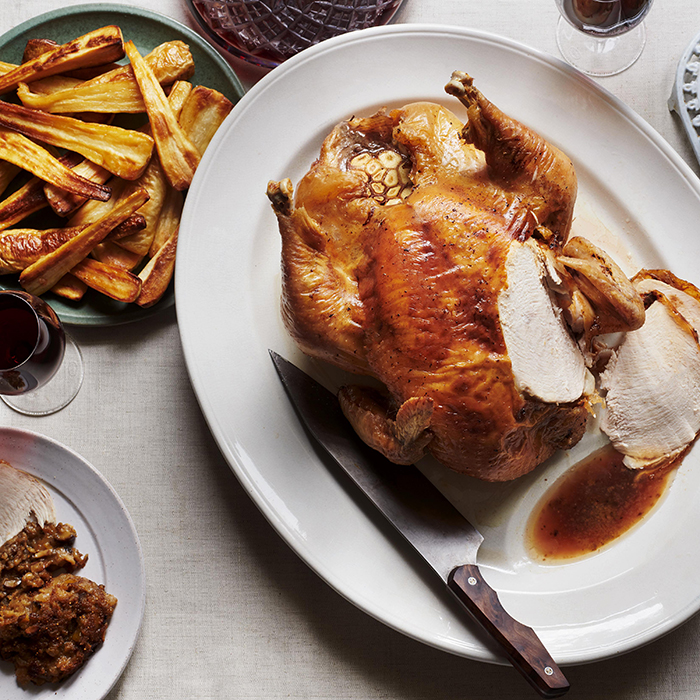A Christmas bird: capon
Author: Stewart Turner

As we get into the business end of the year, I’m always asked to provide recipes for Christmas -whether it be general tips or dishes. Having done most of the classics, this year I thought I’d do a recipe for a capon, which is very popular in Europe and is commonly eaten for the festive family feast.
Capon is a castrated cockerel or rooster that is then fattened. The lack of hormones and slow growth rates mean they tend to be more tender and flavourful, as well as having a higher fat content which results in a juicer bird for the table. They are only available for Christmas and we have done many Italian and French themed Christmas dinners where the capon is always the main event. It’s a great alternative to either turkey or goose. They are not commercially produced and are very much an artisan or even luxury product due to the amount of growing time compared with today’s mass-produced poultry. As such they don’t come cheap, but – as with all boutique products – I think you get what you pay for.
- 1 capon – weighing approximately 3 to 3.5kg, wishbone and giblets removed
- Olive oil
- Salt and freshy ground pepper
- 1 head of garlic – split
- 1 lemon – halved
- 5 sprigs of thyme
- 2 sprigs of rosemary
- 2 large onions – thickly sliced
- 100g butter – softened
Preheat the oven to 200°C. Season the butter with salt and pepper. Loosen the skin from the breasts of the bird, being careful not to tear it. Pipe the butter under the skin and rub the outside to evenly distribute it over each breast. Fill the cavity with the garlic, lemon and herbs.
Lay the onion slices evenly over the base of a roasting tin and sit the capon on top. Roast in the oven for about 20 minutes and then baste well with pan juices, lower the oven to 160°C and continue to cook for a further hour and 40 minutes, basting every half an hour.
At this point the capon should be almost cooked. With a meat thermometer, check the thickest part of the thigh – you need it to be about 70°C. If it’s not quite there, return to the oven and check every five minutes.
Once you’ve hit the right temperature and the bird is cooked, remove to a serving dish. Cover and keep somewhere warm to rest for 20 to 30 minutes. Retain the juices from the pan and deglaze for gravy.
Fig, chestnut and truffle stuffing
- 2 large onions peeled and diced
- 2 cloves
- 100g button mushrooms – diced
- 1 tsp thyme – picked
- 200g chestnuts – cooked, peeled and chopped
- 100g dried figs – chopped
- 150ml chicken stock
- 100g breadcrumbs
- 100g butter – diced
- 50g truffle paste
- 1tbsp truffle oil
- 10g fresh truffle (optional)
- Salt and freshy ground pepper
Heat a frying pan over a medium heat with 50g of butter. Lightly fry the onions, garlic and mushrooms with the thyme until softened but not coloured. Season with salt and pepper.
Add the chestnuts and figs, cook for a further five minutes, then add the stock and bring to the boil, remove from the heat and fold in the breadcrumbs, truffle paste and oil and remaining butter.
Spread the mix into a buttered baking dish and bake at 160°C for about 40 minutes, until the top is lovely and crispy. If using, finish with freshly sliced truffle.
What to drink: It depends on whether you’re making this even more indulgent with the addition of truffle. If fresh truffle is on the cards, you’ll need something with equivalent perfume and a savoury edge; mature red Burgundy, Barolo or Barbaresco would be ideal. If you’re abstaining from truffle, we’d be tempted by something with a sweeter core of fruit to rival the figgy richness of the stuffing – a top-class New World Pinot Noir, from the likes of Storm, Crittenden or Au Bon Climat would do the trick.


